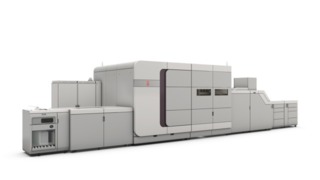Direct Mail: Best Practices
Before you can dive into expanding or revising your direct mail marketing strategy, an assessment of existing practices must take place to determine the gaps.

Direct mail marketing has been a promotional and informational tool since Babylonian times. Merchants etched their product offerings on stone tablets and delivered them to prospective clients in different towns. The advertising medium experienced slow development until German native Johannes Gutenberg invented the printing press in 1440 and made literacy accessible to different socioeconomic levels. William Claxton brought the technology to England and started producing pamphlets for people to order from his printing press in 1480. The following years saw direct mailing concepts spread as people immigrated to America. Aaron Montgomery Ward produced a single page catalog in 1872 that revolutionized how companies promote their goods and established the foundation for modern consumerism. The introduction of the color printer in 1976 and early digital computers were a major milestone in creating unique and higher quality direct mail marketing pieces.
Is Direct Mail Marketing Obsolete?
Now, 121 billion pieces of mail are sent out each year with approximately 100 million adults making purchases from catalogs in 2016. In the same year, the Direct Marketing Association (DMA) revealed that direct mail has a 5.3% response rate compared to 0.6% for prospect emails. These numbers are impressive in a digitally driven world where online/email marketing is taking a piece of the consumer pie. But, the constant inundation of daily emails and technology gives direct mail a strong foothold in the industry. While emails can fall subject to spam inboxes and rely solely on a headline to entice the reader, mail pieces have the advantage of utilizing quality paper, colors to evoke specific reactions, and attention-grabbing messages. It is an experience that mirrors receiving a letter or package in the mail in contrast to an automated drop in an email inbox cluttered with unsolicited - and potentially dangerous - junk mail. This long-standing marketing method still packs power, but it is now integrated WITH technology.
Testing the Direct Mail Marketing Waters
Before you can dive into expanding or revising your direct mail marketing strategy, an assessment of existing practices must take place to determine the gaps. This can be tracked via reports in current customer relationship management (CRM) or production tracking software or, if budget allows, bringing in a professional to audit current practices and how they are impacting the marketing initiatives. Budgeting considerations also have to be taken into account with the rising cost of postage and with any outsourcing for marketing materials. Research into similar companies and their marketing mix also provides insight into what is working for other successful businesses.
You can also test the direct mailing waters on your current clientele via a dual marketing promotion to gauge their reaction. Chief Marketer, a resource dedicated to multichannel marketing, suggests tying the test to an email alert to tell them to watch their physical mail followed up with a call to action to keep it at the forefront of their minds. Measuring the reaction via this method or a targeted cold mailing piece to thank top clients for their loyalty along with a reward are both substantial tests prior to rolling out a full initiative.
If direct marketing fits into your repertoire, there are additional sources for suggestions on how to facilitate the process. USPS released an extensive guide to direct mail marketing in 2011 and encouraged the integration of current technology into mail pieces. QR codes, calls to action via website engagement or limited time coupons, and visually appealing pieces to attract potential client’s attention were all suggested methods to attract a potential client’s attention. They also offered statistics on mailing types and determined that dimensional mailers and catalogues have the highest response rates at 5.72 and 4.92 percent, respectively.
Of course, this specific format is contingent upon the amount and complexity of information that needs to be conveyed to the reader. Personalization in mailers to existing customers can also drive in repeat business and set reminders for future appointments, referrals, and client appreciation events. And tracking response rates based on generated leads and web/brick and mortar traffic originating from mailing pieces as well as costs can give an accurate depiction of ROI and so adjustments can be made to satisfy budgeting goals.
New School Tech to Improve an Old School Method
Software technology companies are answering client demands by working with others to provide a seamless end-to-end solution. For example, Ironsides Technology, an automated tracking software provider, formed a partnership via integration with Virtual Systems, a prominent Print MIS software provider. The partnership improves Ironsides APT (Automated Production Tracking), which integrates into Midnight MIS software, one of the most prominent (and an award-winning) tools to manage the processes an order from inception to invoicing. Midnight users can now automate their production workflow tracking and monitor this information in their dashboard. And, Ironside APT users now have the capability to create jobs and have access to tools to track and manage cost for more efficiency, reduced errors, and lowered risk management in terms of abiding by SLA compliance requirements. Acquiring software capabilities can translate to a smoother production process and higher quality direct mail marketing end products.
Of course, new software capabilities will only go as far as the hardware allows. United Mail, a marketing service provider, has collaborated with businesses of all sizes across America since 1980 and recently acquired the Océ VarioPrint i300 inkjet printer from Canon Solutions America. President of Operations Casey Hendrick noted that the move from toner to inkjet was necessary to enhance productivity, reduce costs, produce higher quality products, and to continue to add progressive technology to maintain its reputation as an innovative service provider. “Since installation, the Océ VarioPrint i300 inkjet press has enabled us to compete with any type of variable data printing output across numerous verticals and industries,” said Hendrick. Their latest hardware was accompanied by Océ PRISMAsync software to streamline and manage their production workflow.
Future Projections and Employee Engagement
The reinvention of direct mail marketing and integration of technology has set the medium up for a solid future. A 2015 Print Industries Market Information and Research Organization (PRIMR) study projects at .4% increase in direct mail volume from 2015 to 2020 in the B2C segment. The report also suggested a trend in companies adapting new high-speed inkjet presses like the aforementioned United Mail with a special attention to personalization, coating, and other value-added additions.
But, direct mail marketing doesn’t necessarily have to be focused on those outside of the company. An effective print marketing campaign can incite employee involvement and have a ripple effect on the general population. Mercedes accomplished this feat in 2014 with their Belgium-based ‘Puts You in the Spotlight” campaign to promote their C-Class model. The marketing team created a direct mail invitation to fleet managers from other segments to test the new vehicles. A picture and personalized headline accompanying a front-page article was made for over 900 newspapers that went out to the managers on their doorsteps. The initiative was carried out overnight by Symeta, personalized printed communication experts who were up for the extensive challenge. The inclusion of a picture of the managers, who were called star guests of the testing event, made them feel important and sparked worldwide interest. Mercedez-Benz Fleet & Corporate Sales Manager Gauthier Helleputte noted the results of the mailer “We received more positive reactions due to the originality of this invitation,” he said. Mercedes initiative was a great way to get employees involved in a new release and also a powerful example of how direct mail pieces affect people.
Direct mail marketing can be a powerful tool to integrate in your current marketing mix that allows you to think outside of the box and provide a colorful, quality, tangible promotional piece in a world of emails. It’s a trustworthy tool with a personal, professional touch that has stood the test of time and will continue to have a place in the B2B and B2C market that will likely be worth the extra effort and postage cost.




